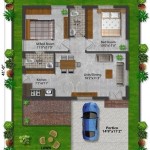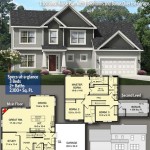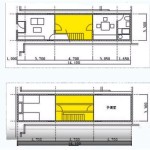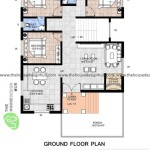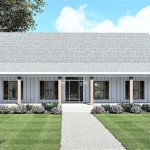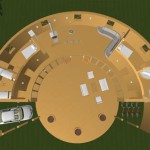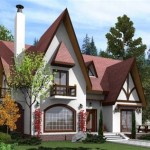What Is Included In A Complete Set of House Plans in Virginia Beach?
Embarking on a new construction project or a significant home renovation in Virginia Beach requires a comprehensive set of house plans. These plans serve as a blueprint for builders, contractors, and inspectors, ensuring accurate execution and compliance with local building codes. A complete set of house plans is far more than just a basic outline; it's a detailed roadmap encompassing various elements crucial for a successful project. Understanding the components of a complete set of house plans is essential for homeowners to effectively communicate their vision and ensure that their expectations are met.
In Virginia Beach, the requirements for house plans can be stringent due to considerations like coastal weather patterns, flood zones, and adherence to the Virginia Uniform Statewide Building Code (USBC). Therefore, a thorough and detailed set of plans is crucial for obtaining necessary permits and avoiding costly delays or revisions during the construction process.
Key Point 1: Architectural Drawings – The Foundation of Your House Plans
Architectural drawings form the core of any complete set of house plans. These drawings provide a visual representation of the proposed building, including its layout, dimensions, and overall aesthetic. The architectural drawings consist of several essential components:
Floor Plans: These are bird's-eye views of each level of the house, showing the arrangement of rooms, hallways, doors, windows, and other features. They include precise dimensions and indicate the location of fixtures such as sinks, toilets, and appliances. Floor plans are critical for understanding the flow and functionality of the space.
Elevations: Elevations are orthographic projections showing the exterior views of the house from different angles (front, rear, left, and right). They depict the building's height, roofline, window and door placement, and exterior finishes. Elevations provide a visual representation of the house's appearance and its relationship to the surrounding landscape.
Sections: Section drawings are vertical cuts through the house, revealing the internal construction details of walls, floors, and roofs. They show the layering of materials, insulation, framing, and structural components. Sections are essential for understanding how the building is put together and ensuring structural integrity.
Site Plan: The site plan illustrates the location of the house on the property, including property lines, setbacks, easements, and other relevant features. It also shows the location of driveways, walkways, landscaping, and utilities. The site plan is crucial for ensuring compliance with zoning regulations and determining the optimal placement of the house on the lot.
Details: Detail drawings are enlarged views of specific construction elements, such as window and door details, stair construction, or foundation details. They provide precise information about materials, dimensions, and construction methods, ensuring accuracy and quality in the finished product.
When reviewing architectural drawings, homeowners should pay close attention to dimensions, room sizes, window and door placements, and overall layout. Ensure that the drawings accurately reflect their vision and functional requirements. Any discrepancies or ambiguities should be addressed with the architect or designer before proceeding with the project.
Key Point 2: Structural Engineering Drawings – Ensuring Stability and Safety
Structural engineering drawings are a critical component of a complete set of house plans, especially in Virginia Beach, where structures must withstand coastal weather conditions and potential seismic activity. These drawings are prepared by a licensed structural engineer and provide detailed information about the building's structural system, including foundations, walls, floors, and roofs.
Foundation Plan: The foundation plan shows the layout of the foundation, including footings, walls, and slabs. It specifies the size and type of materials used, such as concrete, rebar, and masonry. The foundation plan is crucial for ensuring the stability and durability of the building.
Framing Plans: Framing plans illustrate the layout of the structural framing members, such as studs, joists, rafters, and beams. They specify the size, spacing, and type of materials used, such as lumber or steel. Framing plans are essential for ensuring the structural integrity of the walls, floors, and roofs.
Lateral Load Resisting System: In coastal areas like Virginia Beach, the lateral load resisting system is of paramount importance. This includes elements designed to resist wind and seismic forces, such as shear walls, braced frames, and moment frames. The structural engineering drawings will detail the design and construction of these elements to ensure the building's stability under extreme conditions.
Calculations: Structural engineering drawings are typically accompanied by calculations that demonstrate the structural capacity of the building elements. These calculations verify that the design meets applicable building codes and standards and can withstand the anticipated loads.
Homeowners should understand that structural engineering drawings are not merely about aesthetics; they are about ensuring the safety and long-term performance of the building. A qualified structural engineer should be involved in the design process to assess the site conditions, structural requirements, and potential hazards. The engineer will then prepare detailed drawings and calculations that meet the applicable building codes and standards.
Key Point 3: MEP (Mechanical, Electrical, and Plumbing) Drawings – Essential Systems Integration
The mechanical, electrical, and plumbing (MEP) drawings are an integral part of a complete set of house plans, providing detailed information about the building's essential systems. These drawings ensure that the house is properly heated, cooled, ventilated, powered, and supplied with water and waste disposal systems.
Mechanical Drawings: Mechanical drawings show the layout of the heating, ventilation, and air conditioning (HVAC) system, including ductwork, equipment locations, and control systems. They specify the size and capacity of the equipment, as well as the type of refrigerant and fuel used. Mechanical drawings are crucial for ensuring energy efficiency and occupant comfort.
Electrical Drawings: Electrical drawings illustrate the layout of the electrical system, including wiring, outlets, switches, lighting fixtures, and panel boards. They specify the voltage, amperage, and grounding requirements for each circuit. Electrical drawings are essential for ensuring electrical safety and preventing overloads or short circuits.
Plumbing Drawings: Plumbing drawings show the layout of the water supply and drainage systems, including pipes, fixtures, and equipment. They specify the size and type of pipes used, as well as the location of valves, traps, and cleanouts. Plumbing drawings are crucial for ensuring proper water pressure, preventing leaks, and maintaining sanitary conditions.
Energy Efficiency Considerations: In Virginia Beach, energy efficiency is a significant concern due to climate considerations. MEP drawings often incorporate details about energy-efficient equipment, insulation, and building envelope sealing to minimize energy consumption and reduce utility costs.
When reviewing MEP drawings, homeowners should pay attention to the location of outlets, switches, and fixtures, as well as the type and capacity of the equipment. Ensure that the drawings meet their functional requirements and consider future needs. Any modifications or additions to the MEP systems should be discussed with the appropriate contractor or engineer.
Beyond these key elements, a complete set of house plans might also include:
Specifications: These are written documents that describe the materials, finishes, and construction methods to be used in the project. Specifications provide detailed information about the quality and performance of the various building components.
Permit Sets: These are copies of the house plans that are submitted to the local building department for review and approval. Permit sets typically include all of the architectural, structural, and MEP drawings, as well as any required supporting documentation.
As-Built Drawings: These drawings are prepared after the construction is complete and reflect any changes or modifications that were made during the project. As-built drawings provide an accurate record of the final construction and are useful for future renovations or repairs.
Obtaining a complete and accurate set of house plans is a critical step in any construction project or major renovation in Virginia Beach. The plans serve as a communication tool between the homeowner, architect, engineer, contractor, and building department. They ensure that the project is executed according to plan, meets all applicable building codes, and delivers the desired results. By understanding the components of a complete set of house plans, homeowners can effectively manage their project and achieve their vision for their dream home.

Beach Style House Plan 4 Beds 3 5 Baths 2894 Sq Ft 938 126 Houseplans Com

Beach Style House Plan 4 Beds 3 5 Baths 2894 Sq Ft 938 126 Houseplans Com

Virginia Beach Building Group

Plan 75977 Modern Style House Floor With Covered Lanai

Virginia Beach House Als Cottages Timeshares

1026 Collection Creek Way Virginia Beach Va 23454 Homes Com
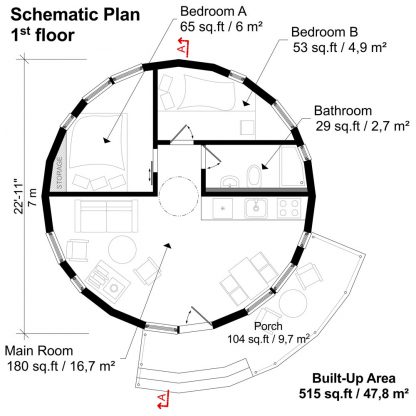
Round House Building Plans

Aquatic Dreams Oceanfront Private Pool Hot Tub Virginia Beach Vrbo

Virginia Beach

218 89th St B Virginia Beach Va 23451 Zillow


